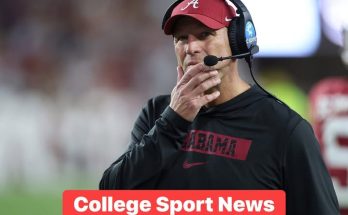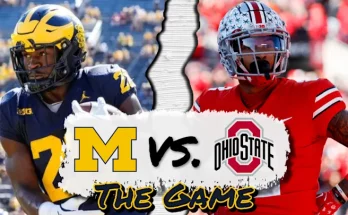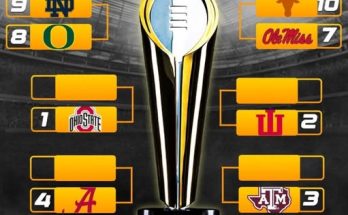Nick Saban’s tenure at Alabama stands as a monumental era in college football, characterized by dominance, precision, and an unwavering commitment to excellence. From 2007 to 2024, Saban transformed the Crimson Tide into a powerhouse, amassing six national championships and nine Southeastern Conference (SEC) titles. His strategic brilliance and meticulous preparation were evident in every game, particularly in his head-to-head matchups against SEC rivals. This article delves into Saban’s record against each SEC team during his illustrious run at Alabama, celebrating his unparalleled success and the legacy he leaves behind.
Saban’s dominance in the SEC is best exemplified by his record against Tennessee. Over 17 seasons, he compiled a remarkable 16-1 record against the Volunteers, including a 15-game winning streak from 2007 to 2021. His only defeat came in 2022, a narrow 52-49 loss at Neyland Stadium. This unparalleled success ties him with the legendary Bear Bryant for the most wins in the “Third Saturday in October” rivalry, though Saban holds the superior winning percentage at 94.1% .
Against Auburn, the stakes were always high, and Saban’s record reflected the intensity of the Iron Bowl. While Auburn managed to secure victories in 2010 and 2013, the latter marked one of the most dramatic moments in college football history—the “Kick Six,” where Auburn returned a missed field goal attempt for a touchdown as time expired. Despite these setbacks, Saban’s overall record in the rivalry was impressive, underscoring his ability to navigate the pressures of one of the sport’s most storied rivalries.
Florida, under Urban Meyer and later Will Muschamp, presented formidable challenges, especially in the early years of Saban’s tenure. The Gators handed Alabama a significant defeat in the 2008 SEC Championship Game, but Saban’s Crimson Tide avenged that loss in 2009, defeating Florida in the SEC title game and later in the national championship. This pattern of redemption became a hallmark of Saban’s coaching philosophy—never allowing a loss to define his team’s trajectory .
Georgia, often considered Alabama’s most consistent challenger in the SEC, faced Saban’s teams in several high-stakes matchups. The Bulldogs secured victories in 2007 and 2015, but Saban’s squads often rose to the occasion in rematches, including a thrilling 32-28 win in the 2012 SEC Championship Game, a victory that propelled Alabama into the national title game .
Kentucky, Mississippi State, and Ole Miss were teams that Saban’s Alabama teams typically dispatched with relative ease. These matchups often served as opportunities for the Crimson Tide to fine-tune their strategies and depth, showcasing the program’s depth and Saban’s ability to maintain focus regardless of the opponent’s stature.
Missouri, a newer addition to the SEC, found itself outmatched in its encounters with Alabama. Saban’s teams consistently dominated the Tigers, reflecting the disparity in program development and resources between the two schools.
South Carolina, under Steve Spurrier, posed challenges with its innovative offensive schemes. However, Saban’s defensive prowess often neutralized the Gamecocks’ strategies, leading to a series of victories that highlighted Alabama’s adaptability and preparedness.
Texas A&M, entering the SEC in 2012, quickly became a notable opponent, especially with the emergence of quarterback Johnny Manziel. The Aggies secured a memorable victory in 2012, but Saban’s teams adjusted in subsequent years, reclaiming dominance in the series.
Vanderbilt, often considered the SEC’s underdog, faced the full brunt of Alabama’s power during Saban’s tenure. The Commodores rarely posed a significant threat, and Saban’s squads capitalized on these matchups to assert their superiority.
Saban’s record against SEC teams reflects not just victories but the manner in which they were achieved. His teams were known for their disciplined approach, strategic depth, and ability to perform under pressure. Each game was a testament to his coaching acumen and his ability to extract peak performance from his players.
Beyond the statistics, Saban’s influence on the SEC and college football at large is immeasurable. His emphasis on the “process” over the outcome revolutionized coaching philosophies, shifting the focus to consistent preparation and execution. This mindset permeated the Alabama program and set a standard for excellence that other programs aspired to reach.
The impact of Saban’s tenure at Alabama is also evident in the coaching tree he cultivated. Numerous former assistants and players have gone on to secure head coaching positions, spreading his influence throughout the college football landscape. This legacy ensures that Saban’s philosophy and approach will continue to shape the sport for years to come.
In conclusion, Nick Saban’s record against SEC teams during his time at Alabama is a testament to his unparalleled coaching ability, strategic brilliance, and unwavering commitment to excellence. His legacy is not just in the championships won but in the standard of excellence he established, the players he mentored, and the lasting impact he had on college football. As the SEC moves forward into a new era, the shadow of Saban’s influence looms large, a reminder of a time when the Tide rolled, and Saban ruled.



